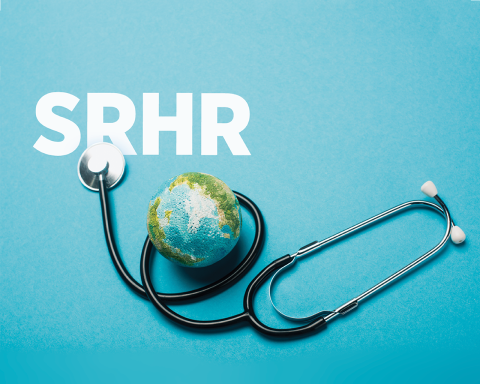The COVID-19 pandemic has exposed weaknesses in national health systems around the world and exacerbated structural inequalities in access to health care. Its impact on people’s health and well-being has been widespread, from alarming decreases in routine vaccinations among children to significant spikes in substance use and depression. The pandemic has underscored the importance of emergency preparedness and the need to invest in health systems, lending greater urgency to global efforts aimed at achieving universal health coverage.
Defining Universal Health Coverage
Under universal health coverage, all individuals and communities receive the health services they need without risking financial hardship. At the heart of this approach is a commitment to equity, so all individuals who need health services are able to get them, not only those who can afford them. Universal health coverage also focuses on ensuring a level of quality care that helps people achieve their desired health outcomes.
Countries have long endeavored to broaden access to health care, but this particular framework was cemented as a global priority in 2015. As part of the United Nations Sustainable Development Goals, adopted by 193 countries, the global community committed to achieving universal health coverage for all by 2030. What these efforts look like in practice varies dramatically, as countries take a variety of paths to structure and finance their health systems in pursuit of this overarching goal. These range from government-financed and -run approaches, emulating the United Kingdom’s long-standing National Health Service, to those relying on a mix of private and publicly funded health insurance, like South Korea.
Reforms are underway in many countries to achieve universal health coverage. For example, many countries have increased government spending and offered subsidies in order to reach target populations and achieve more equitable access to care. Despite these efforts, coverage remains low. According to the World Health Organization (WHO), even before the pandemic, at least half of the world’s population could not obtain essential health services and 800 million people spent at least 10% of their household budget on health care expenses. These gaps are especially pronounced in low- and middle-income countries. A recent multicountry analysis of health insurance coverage in Sub-Saharan Africa found that only four countries—Burundi, Gabon, Ghana and Rwanda—had more than 20% of their population covered by any type of health insurance, and coverage overall remains highly inequitable. These persistent gaps, made even worse by the COVID-19 pandemic and particularly affecting marginalized populations, underscore the need to advance universal health coverage efforts around the world.
The Role of Sexual and Reproductive Health Care
Sexual and reproductive health care is essential to the fulfillment of universal health coverage and is included in the Sustainable Development Goals, which commit countries to providing universal access to sexual and reproductive health services by 2030. Recent data illustrate the extent to which the current lack of access to sexual and reproductive health care puts many people at risk. Each year in low- and middle-income countries, 35 million women have abortions in unsafe conditions, 13 million women have newborns who do not receive needed care for major complications and 299,000 women die from causes related to pregnancy and childbirth.
The positive effects of meeting the need for this care would be immense. Unintended pregnancies, unsafe abortions and maternal deaths would drop by about two-thirds if all women in low- and middle-income countries who want to avoid a pregnancy were to use modern contraceptives and all pregnant women were to receive needed care.
Ensuring the inclusion of these services in universal health coverage is critical from a human rights perspective and also represents a smart investment for national governments. Every dollar spent on contraceptive services beyond the current level would save $3 in the cost of maternal, newborn and abortion care, because the use of contraceptives reduces the number of unintended pregnancies. When it comes to universal health coverage packages specifically, bundling sexual and reproductive health service provision offers additional cost savings, because many of these services—such as STI treatment, safe abortion care and safe childbirth services—can prevent dangerous and expensive complications.
A Comprehensive Package
Universal health coverage plans should take a comprehensive approach to sexual and reproductive health and include elements that are often neglected in national policies and programs. The Guttmacher-Lancet Commission on Sexual and Reproductive Health and Rights set forth an essential package of interventions, which aligns with the services detailed in WHO’s guidance for countries on universal health coverage:
- Comprehensive sexuality education
- Counseling and services for a range of modern contraceptives, with a defined minimum number and types of methods
- Antenatal, childbirth and postnatal care, including emergency obstetric and newborn care
- Safe abortion services and treatment of complications of unsafe abortion
- Prevention and treatment of HIV and other sexually transmitted infections
- Prevention, detection, immediate services and referrals for cases of sexual and gender-based violence
- Prevention, detection and management of reproductive cancers, especially cervical cancer
- Information, counseling and services for subfertility and infertility
- Information, counseling and services for sexual health and well-being
Recognizing that budget constraints make it unrealistic for all countries to integrate the full package of sexual and reproductive health interventions into their health benefit plans from the outset, an incremental approach to expanding access to this care will be needed. For example, in 2020, the government of Zambia became the first country in the region to develop a new universal health coverage plan that includes contraceptive supplies and services. Initiatives like these create an important foundation for strengthening access to the full spectrum of sexual and reproductive health care.
As governments across low- and middle-income countries develop universal health coverage plans, policymakers have the chance to design policies that deliver on sexual and reproductive health care from the beginning. Governments should include comprehensive sexual and reproductive health interventions in their universal health coverage packages, and work with international partners to bolster sustainable financing for these efforts.
